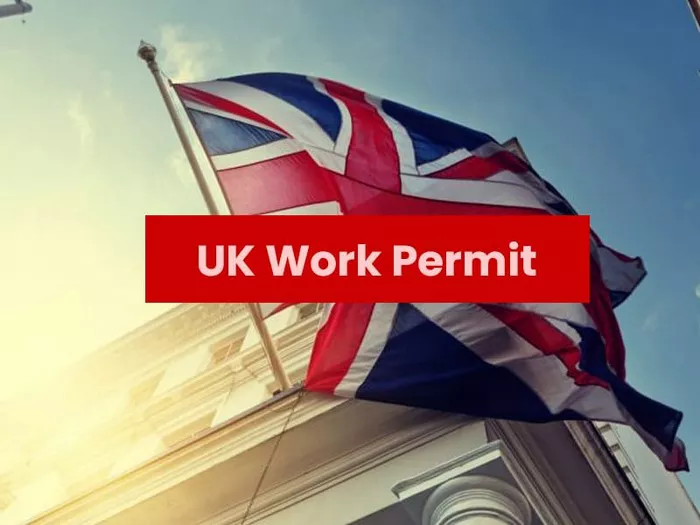The United Kingdom (UK) attracts a diverse array of talent from around the globe, offering opportunities across various sectors through its robust work visa system. Whether you’re a skilled professional, an entrepreneur, or an intra-company transferee, navigating the UK’s work visa landscape requires understanding the different types of visas available, their eligibility criteria, application processes, and the rights and responsibilities they entail.
Types of UK Work Visas
1. Tier 2 (General) Visa
The Tier 2 (General) Visa is designed for skilled workers coming to the UK with a confirmed job offer from a licensed sponsor. Key features include:
Eligibility: Requires a job offer from a UK employer with a valid Tier 2 sponsor license.
Duration: Typically granted for the duration of the job offer, up to a maximum of 5 years and 14 days, with options to extend.
Pathway to Settlement: Allows for settlement (indefinite leave to remain) after five years, provided all criteria are met.
2. Tier 1 (Entrepreneur) Visa
The Tier 1 (Entrepreneur) Visa is aimed at individuals looking to establish or take over a business in the UK. Key features include:
Eligibility: Requires access to at least £50,000 in investment funds (or £200,000 in some cases) and endorsement from an approved UK endorsing body.
Duration: Initially granted for 3 years and 4 months, with options to extend.
Pathway to Settlement: Leads to eligibility for indefinite leave to remain after five years, subject to meeting specified requirements.
3. Tier 2 (Intra-Company Transfer) Visa
The Tier 2 (Intra-Company Transfer) Visa facilitates intra-company transfers to the UK for employees of multinational companies. Key features include:
Eligibility: Requires a job offer from a licensed sponsor and a role that meets the specific criteria for intra-company transfers.
Duration: Varies depending on the type of intra-company transfer (long-term staff, short-term staff, graduate trainee), with maximum durations ranging from 12 months to 5 years.
Pathway to Settlement: Generally does not lead to settlement, but extensions are possible under certain conditions.
4. Tier 5 (Temporary Worker) Visa
The Tier 5 (Temporary Worker) Visa caters to individuals coming to the UK for temporary work or specific projects. Key categories include:
Eligibility: Requires sponsorship from a UK employer licensed to sponsor Tier 5 workers.
Duration: Typically granted for up to 12 or 24 months, depending on the specific category (e.g., creative and sporting, charity worker, religious worker).
Pathway to Settlement: Does not generally lead to settlement, as it is designed for temporary stays.
Application Process
1. Sponsorship and Endorsement
Finding a Sponsor: Prospective employers must hold a valid Tier 2 sponsor license and issue a Certificate of Sponsorship (CoS) to the applicant.
Endorsement: Certain visa categories, like the Tier 1 (Entrepreneur) Visa, require endorsement from an approved endorsing body confirming the applicant’s business plan and eligibility.
2. Document Preparation
Basic Requirements: Applicants typically need to provide a valid passport, evidence of English language proficiency, proof of funds (if applicable), and other specific documents depending on the visa category.
Biometric Residence Permit (BRP): Successful applicants receive a BRP upon arrival in the UK, which serves as proof of their immigration status and entitlements.
3. Application Submission
Online Application: Most visa applications are submitted online through the UK Visas and Immigration (UKVI) website.
Visa Fees: Applicants are required to pay a visa application fee, which varies depending on the type of visa and the applicant’s circumstances.
4. Processing Times and Decision
Processing Times: Processing times vary but are typically faster for priority and premium service applications.
Decision: Applicants are notified of the decision on their visa application and, if successful, receive a visa vignette (sticker) in their passport or a digital confirmation.
SEE ALSO: HOW LONG DOES IT TAKE TO GET A VISA FOR THE UK?
Rights and Responsibilities
1. Rights
Work Rights: Visa holders are generally permitted to work in the UK as specified in their visa conditions.
Access to Services: Depending on the visa type, holders may have access to public services such as healthcare and education.
2. Responsibilities
Compliance: Visa holders must adhere to UK immigration rules, including reporting changes in circumstances and complying with visa conditions.
Taxation: Must comply with UK tax obligations, including National Insurance contributions where applicable.
Challenges and Considerations
1. Visa Restrictions
Dependants: Rules regarding bringing dependants vary by visa type and may affect family members’ ability to join the visa holder in the UK.
No Recourse to Public Funds: Some visa categories restrict access to certain public funds, requiring visa holders to support themselves financially.
2. Brexit Implications
Post-Brexit Changes: The UK’s departure from the European Union has led to changes in immigration rules and policies affecting EU, EEA, and Swiss nationals.
Conclusion
Navigating the UK’s work visa system involves understanding the specific requirements, processes, and implications associated with each visa category. Whether you’re pursuing opportunities as a skilled worker, entrepreneur, or intra-company transferee, thorough preparation and adherence to immigration rules are crucial for a successful application and integration into the UK workforce.
By staying informed about visa options, eligibility criteria, and application procedures, individuals can effectively plan their career moves to the UK and contribute to its dynamic and diverse economy.


